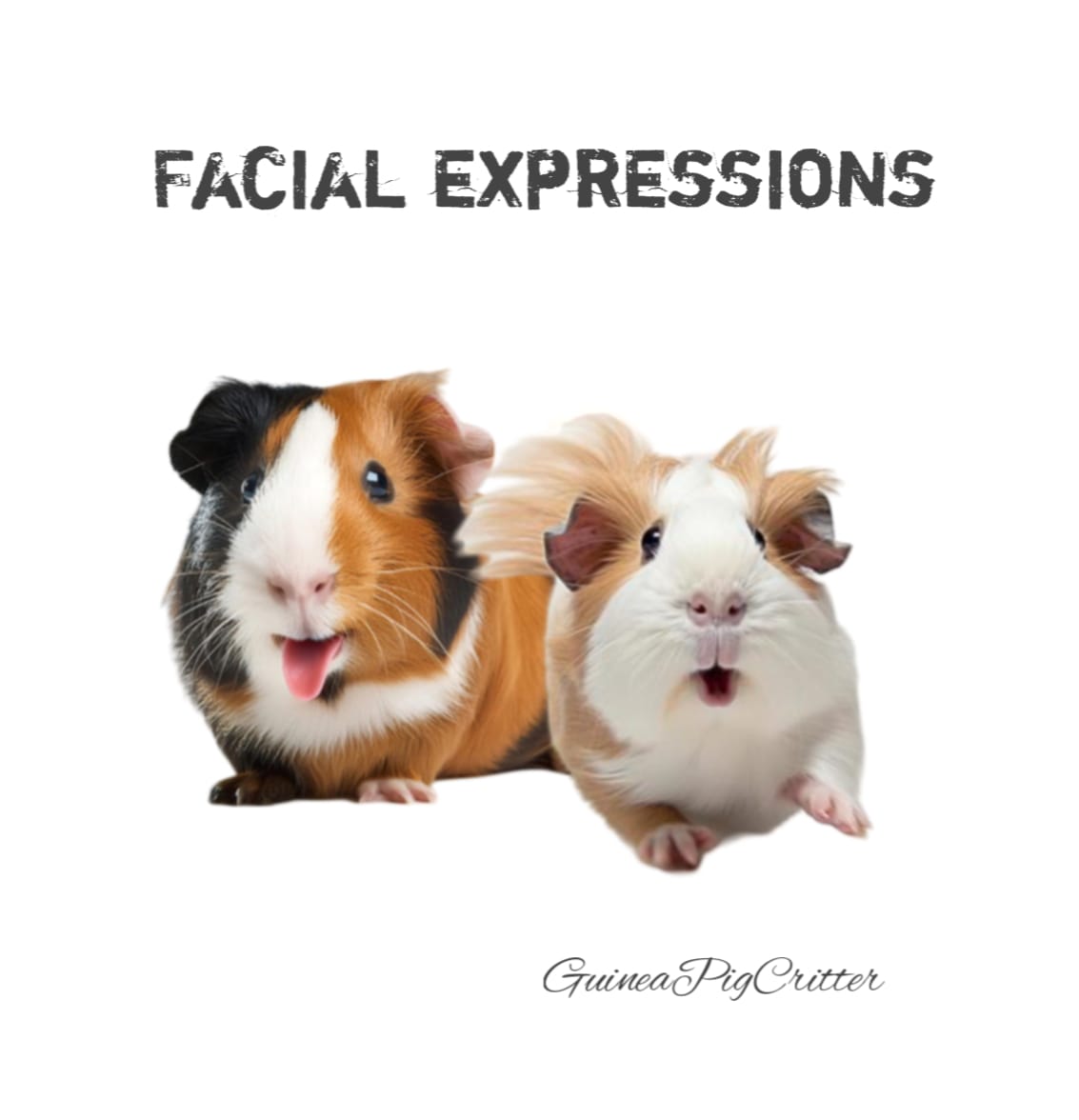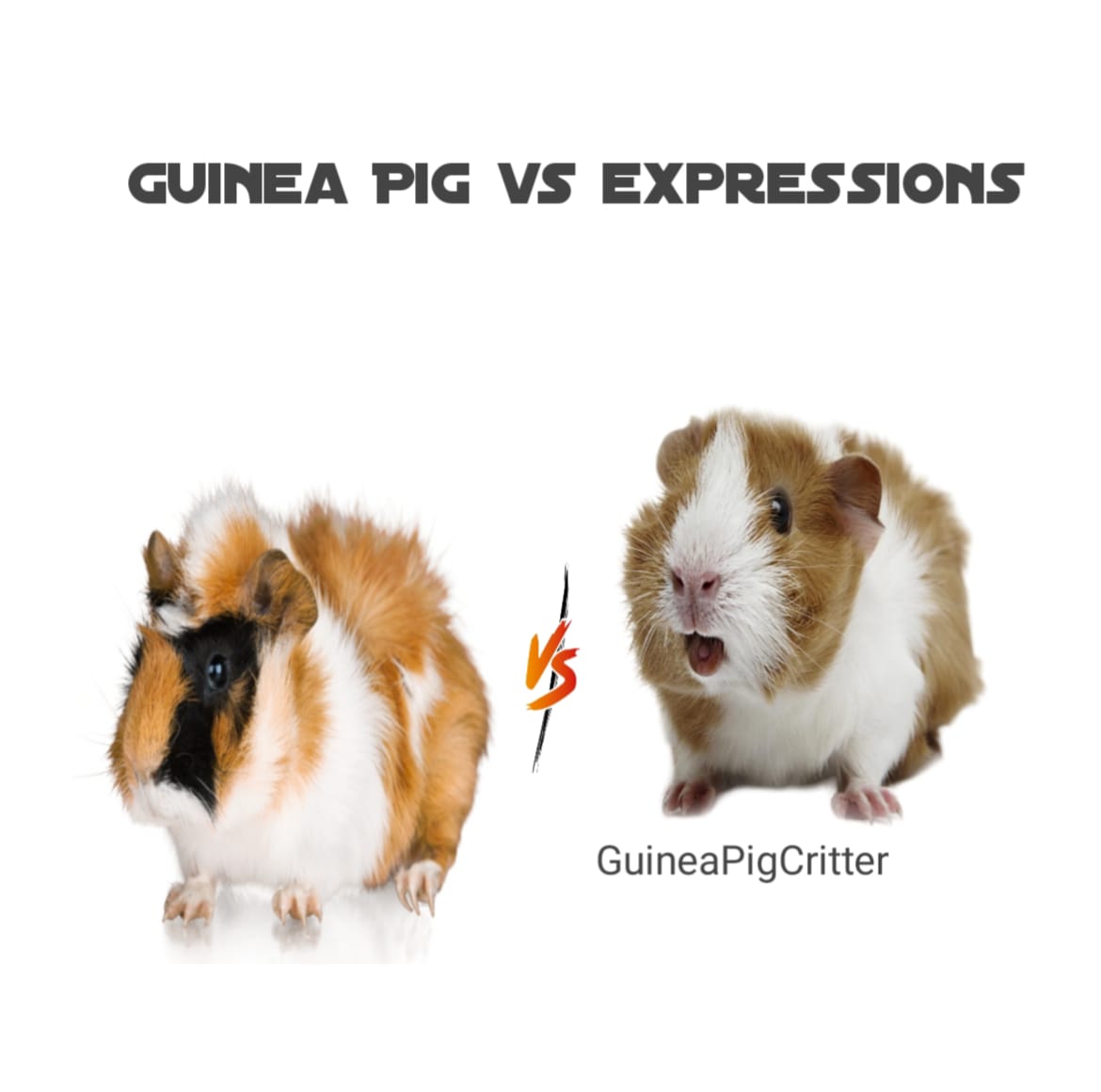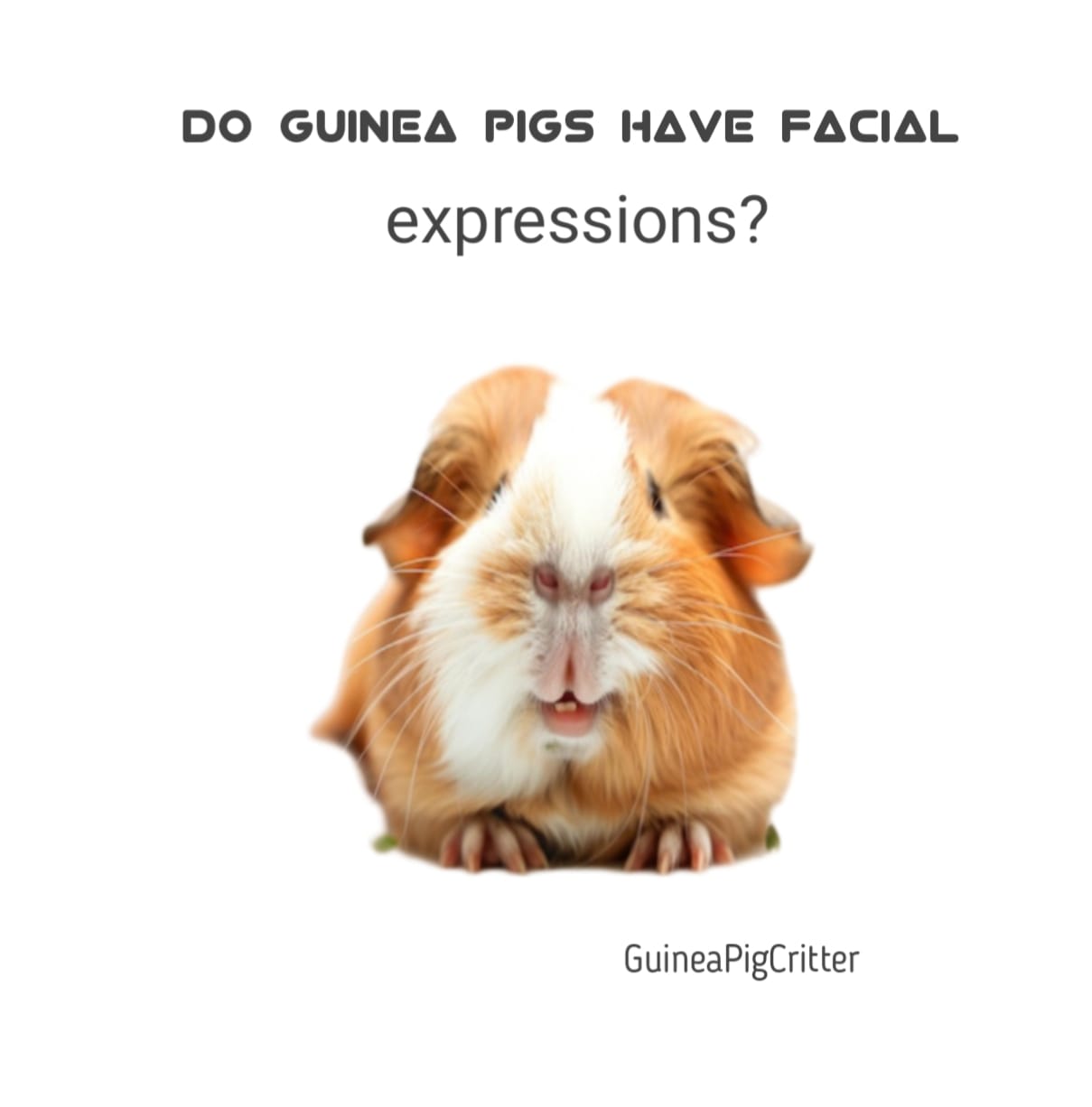Interpreting a guinea pig’s facial expressions—or even knowing if they have them at all—can essentially enhance the bond between the owners and the pets. This article will then discuss the communication of guinea pigs and more focus the authors on emotions, whether guinea pigs use facial signals to express emotions, and how, as their owners, we can interpret their distinct communicative style.
When animals with facial muscles are mentioned, one’s imagination might drift to the large grinning ‘smiles’ on the mouths of dogs or the soft ‘purring’ sounds that cats make when they are smug. Guinea pigs, however, remain a bit of a mystery. They possess cute little faces but their eyes are relatively small, which has many pet owners wonder, are guinea pigs capable of facial expression?
See this post:- Why are guinea pigs friendly?
Decoding social behavior of guinea pigs
To answer the question whether guinea pigs have facial expression it is pertinent to first present their behavior in general. Guinea pigs (sometimes called “cavies”) in the natural habitats are social animals. In their natural habitat, they live in colonies and are highly social and communicative so that they could keep their relationships, warn their members about any threats, and seek places to get food from. But as with many other animals, their communication tactics do not involve a lot of external showing of facial movement.
In fact, vocalizations and body language are the main forms of communication used by guinea pigs, and as such, make up their ‘social language’. That said, guinea pigs do have the ability to express emotions through more discrete means such as some areas of the face which are very informative when properly understood.
Why don’t guinea pigs show overt facial expressions?
Although a guinea pig may not smile or frown as cheerfully as a human, there are a number of other cues that a guinea pig has in order to demonstrate feeling. This is because the structure of their face rounded and naturally because of the smaller facial muscles, it is hard to see exaggerated facial expressions as one would expect to see from dogs or rabbits. However, guinea pigs still manage to express their feelings through other parts of their faces, such as their eyes, ears, whiskers, and how those parts of their body are moved.
Do guinea pigs show facial expressions?
So, do guinea pigs have facial expressions in the traditional sense? Hang on, the answer is yes as well as no. While human beings and some other species have apparently large areas of the face with numerous fully mobile muscles, guinea pigs only have a few, and therefore their facial expressions are much more subtle. They may be subtle, but still useful if one knows how to read them.
For clarification, try to imagine a situation in which a happy and a stressed out guinea pig tries to remember a particular image, how their face would appear in each of the two scenarios. Of course they don’t smile or frown physically but their emotions can be expressed using different facial indicators.
What about animal behaviorists
It is the consensus among animal behavior experts that guinea pigs are quite incapable of assuming complex facial expressions. Some experts however believe that certain common indicating features such as eyelid movement, eye enlargement and narrowing, changes in ear position, whisker position may be useful in indicating emotional state. According to some studies, guinea pigs are capable of recognizing their masters and respond accordingly. These gestures are definitely not physiognomic responses but they do provide a glimpse of skirted facial ability which is crucial in enhancing their relationship with people.
Widely seen and common facial cues and facial indicators and what they indicate
Below are some of the common facial indicators, which the guinea pigs have and which help in getting an idea about their feelings eyes
To those avid guinea pig owners, how do they communicate without uttering phrases and active movements? One aspect that can be useful in communication is for example the eyes of the pet, which our focus will now turn to.
Wide and bright eyes: usually, when a guinea pig’s eyes are wide open, that is a sign they are alert and when they do that while being active, means they are in observation and exploration mode.
Squint, half-closed eyes: sometimes, this can indicate frolicking as they need no activity as if they are lazy and lounging around in a sporting position. But if it’s combined with a hunched up body or strong breathing, it could be that the animal is in pain or ill and it is advisable to keep an eye on their behavior.
Bulging eyeballs: eyes which are showing signs of bulging may indicate fear, distress, or fright especially when the guinea pig is placed in a situation that it is not accustomed. This is also usually marked with jerking body movements, and body language trying to hide or evade.
Ears
Although guinea pigs’ ears may not be as agile as those from other animals, they are still able to communicate certain things to us.
Ears perked up: relatively high and lifted ears suggest active ears that are not only listening to sounds around the guinea pig, but are also likely attempting to locate the source of the sound when it meets some new and interesting sounds. This is due to their inquisitive nature.
Ears that are folded back or near the head: these may be interpreted as being upset, aggravated and are even seen when the guinea pigs are distressed or in pain. In the case that the guinea pig is negative or hides their ears, and emits voices, then likely its feelings are hurt, and it is stressed or annoyed.
Whiskers
Hair like structures that present at the longitude axis of the axis are referred to as whiskers or vibrissae that are interesting and critical for sensory purposes for guinea pigs. They are and will be used for exploratory purposes, but they also can act as a social emotion.
Whiskers facing forward: guinea pigs can also use their whiskers to indicate interest or excitement. When they are in a position direction the nose, this seems to suggest that the guinea pig is eager to explore something or someone.
Whiskers pulled back: another opposite picture is when the whiskers seem to be pulled back or flattened. This is usually an indication that there is feeling of anxiety or being threatened within the animal.
Mouth and nose movements
The sight of the mouth and nose area is able to give some understanding even though guinea pigs smile.
Partial opening with delicate nibbles or tooth brushing gestures: when a guinea pig finds calmness, they might begin to perform low-intensity routine motions with their mouths, such as gentle chewing. This can be an indicator of being at ease as well.
Rapid breathing or sniffing: there is also considerable breathing fast with some sniffing in quick successions. This is a possible relationship indicating signs of curiosity or alarm. When a piggy is in a new location or detecting new stimuli, this is a standard pattern.
How to recognize and respond to guinea pig emotions
Learning how to recognize these cues is one thing while learning how to react to them is quite another. When handling and caring for your guinea pig, this will enable you to do so in a more effective manner and add to the strengthening of the bond between you and your guinea pig.
Guidelines that can help in recognizing emotional cues
Trained observation: an intense gaze should not be interpreted similarly every time. Because of observing your guinea pigs over time, you’ll have a better understanding of their typical range of expressions and moods.
Looking at the situations: the context of the behavior is very critical with guineas. For example, a guineas might display signs of being alert when in a new place, but would still have the same expression if in different settings — perhaps being held — implying they could be quite anxious.
Integrate with other communication forms: utilizing other communication forms such as sounds and position will further allow you to understand guinea pigs because it is the whole body, and not just the face, that communicates.
Guidelines in response to cues
Situations that require soothing: focus on reassuring your guinea pig in cases of stress by lowering noise levels, calming tones of voice, and hiding or seeking soft items.
Situations that could invigorate curiosity: if a guinea pig seems curious, go one step further and help the guinea pig explore by providing safe items, toys, or simple encouragement.
Tactics use to strengthen relationship: once the guinea pig is calm, take this moment to gently pat petting or hand-feed the guinea pig to further promote trust.
Other means of communication among guinea pigs apart from facial expressions other than through their faces, overlook a complete vocabulite of sounds and motion that arouse or draw it out of them activity please.
Vocalizations wheeling: probably the earliest and known movement usually associated with anticipation, most times while waiting for the disk or someone’s attention.” Ppm – probably better known as meadow, soft purring, and normal sounding purring qualifies for this suffrage. Ppm all done for the right side.
Read this post :-what is a baby guinea pig called?
Conclusion
While they lack the exaggerated facial expressions of some other pets, guinea pigs possess their own characteristics which enable them to express emotion. Focusing on their eyes, ears, whiskers, and movements can help you star understanding their needs better and even be able to cater for them.
Learning these expressions and cues helps you not only provide for your guinea pig’s welfare but also enhances the relationship that you share. In that manner, you will not have to second-guess the intention of your pet the next time as it winks or fluffs its fur.


